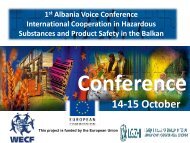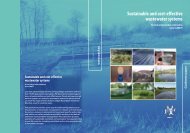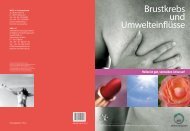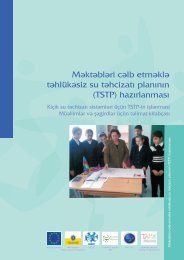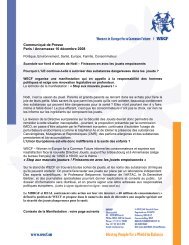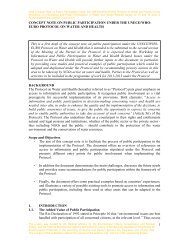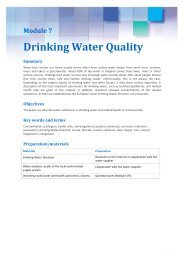Local Action for Safe Water - WECF
Local Action for Safe Water - WECF
Local Action for Safe Water - WECF
Create successful ePaper yourself
Turn your PDF publications into a flip-book with our unique Google optimized e-Paper software.
order to gain some background and knowledge on a drinking water supply system, the sequence of the<br />
modules is arranged in a logical follow-‐up of water issues. Exercises, questions and a box with suggested<br />
activities <strong>for</strong> the development of a WSP <strong>for</strong> the local drinking water supply system are presented at the<br />
end of a module. Text sources and further reading finalise each module.<br />
3. The ring binder’s third part, module 15 -‐ 19, contains suggestions <strong>for</strong> practical activities, guidance <strong>for</strong><br />
doing water test. Forms <strong>for</strong> processing the collected drinking water monitoring results and in<strong>for</strong>mation<br />
are provided. The final modules contain risk assessment <strong>for</strong>ms and questionnaires <strong>for</strong> citizens, water and<br />
health authorities, intended to gather in<strong>for</strong>mation about the local water supply system and <strong>for</strong> surveying<br />
the perception and experiences of the local citizens and other stakeholders. The questionnaires and risk<br />
assessment <strong>for</strong>ms can be adapted to local needs and conditions.<br />
In addition this part supports the users to report and make the findings visible <strong>for</strong> themselves and to the<br />
broader public.<br />
4. The toolbox<br />
There are core activities <strong>for</strong> developing a WSP in which tools are needed, such as assessment of water quality<br />
by analysing <strong>for</strong> example the nitrate concentration or the pH or colour. There<strong>for</strong>e, it will be convenient to have<br />
a (tool) box <strong>for</strong> each class or group to gather the tools needed and related to the WSP lessons. The toolbox<br />
consists of practical tools, which can be combined according to the needs and circumstances. Educational<br />
and/or practical tools can be stored in the box.<br />
The content of the toolbox can be:<br />
• Clear drinking glass of 2 dl or 3 dl<br />
• Nitrate quick test strips – with a range from 0-‐500 mg/l<br />
• pH –indicator strips<br />
• Colour strip <strong>for</strong> measuring colour of the water<br />
• Puzzle poster of “bad” and “good wells”, other pictures or drawings e.g. “The water cycle”<br />
• Precipitation measure beaker<br />
• Thermometer<br />
• Towel or tissues<br />
5. Timeframe<br />
For developing a WSP, a time frame of one school year, working one to two hours per week, could be suitable.<br />
This includes the teaching of the educational materials. However, the water supply system is operating<br />
continually, there<strong>for</strong>e it has to be monitored and recovered frequently. A continuation of the WSP activities, in<br />
particular implementing the identified needed improvements, is required.<br />
Development the first year WSP activities could result in a continuation of sharing in<strong>for</strong>mation while ensuring<br />
cooperation with all stakeholders, thus creating the establishment of a local water committee, which leads to<br />
planning and implementing improvements, and being followed by a new round of assessing the water supply<br />
system.<br />
Remarks<br />
The content of the given WSP compendium are not fixed and can be adjusted and developed according to the<br />
local situation and possibilities <strong>for</strong> implementation. For example, the age and the engagement of the pupils, the<br />
possibilities of the teachers, the input and cooperation of the citizens, the local and/or regional authorities and<br />
other stakeholders will all have an influence to the progress and the results of the WSP.<br />
A <strong>WECF</strong> publication 2012





